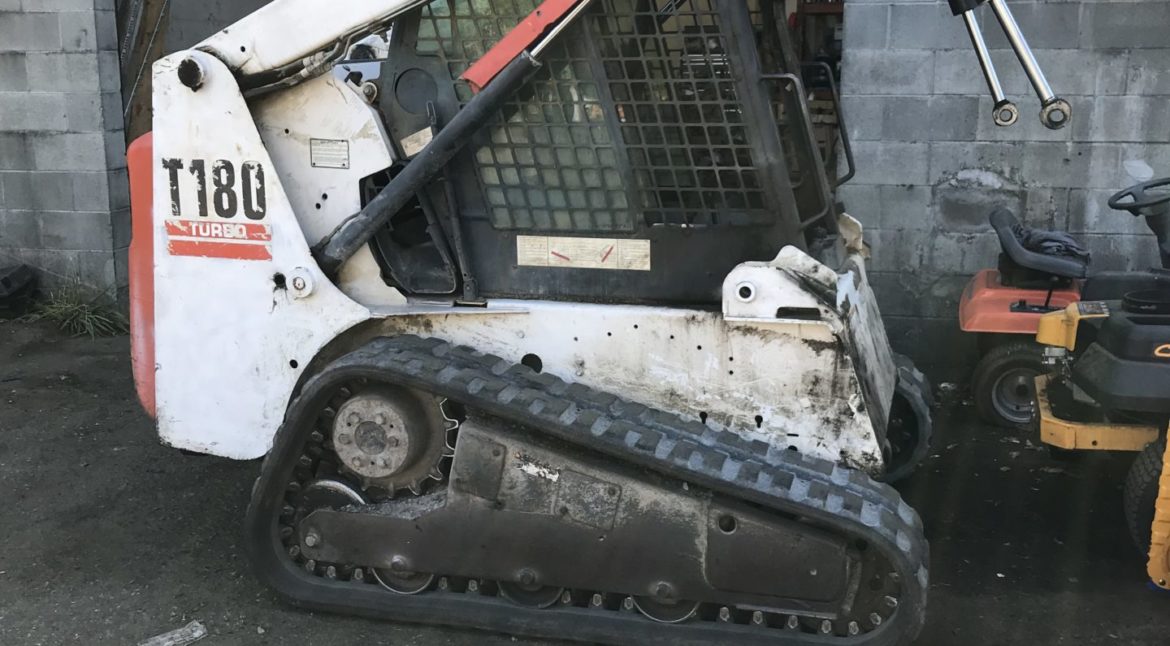Introduction
New Holland skid steer loaders are a trusted workhorse in construction, agriculture, and landscaping. Their versatility and power make them indispensable on job sites, but like any piece of machinery, they can encounter issues from time to time. That’s where our expertise comes in. Welcome to a comprehensive guide on New Holland Skid Steer Troubleshooting.
Whether you’re a seasoned skid steer operator or a new owner, understanding how to diagnose and resolve common problems is crucial to keeping your equipment in top working condition. From engine hiccups to hydraulic glitches and electrical gremlins, these machines can throw various challenges your way. But fear not, as we’ve covered you with the tips and tricks you need to navigate these issues effectively.
This article delves into the most prevalent problems that New Holland skid steer owners may encounter, offering step-by-step troubleshooting techniques and expert advice. By the end, you’ll have the knowledge and confidence to tackle issues head-on, saving time and money on costly repairs.
So, if you’re ready to become a troubleshooting pro and keep your New Holland skid steer loader running smoothly, let’s dive into the world of New Holland Skid Steer Troubleshooting.
Common Issues with New Holland Skid Steer Loaders
Skid steer loaders are renowned for their ruggedness and versatility, but like any complex machinery, they can face their fair share of challenges. Understanding these common issues is the first step towards effective troubleshooting and ensuring your New Holland skid steer remains a dependable work partner.
Engine Problems
One of the primary concerns skid steer owners may encounter is engine trouble. Engines can suffer from various issues, such as poor performance, overheating, or stalling. These problems can result from fuel system blockages, air filter clogs, or even more complex mechanical issues within the engine. Addressing engine problems promptly is crucial to prevent further damage and downtime.
Hydraulic Issues
Hydraulic systems are the lifeblood of skid steer loaders, responsible for powering attachments and lifting heavy loads. Common hydraulic problems include:
- Slow or erratic movement of the loader arms.
- Leaks in the hydraulic lines.
- A sudden loss of hydraulic power.
Identifying and rectifying hydraulic issues is vital to maintain operational efficiency.
Electrical Problems
Electrical issues can manifest as problems, from flickering lights to non-responsive controls. Faulty wiring, damaged connectors, or a drained battery can all contribute to electrical malfunctions. Proper diagnostics and electrical system maintenance can help keep these problems at bay.
Track or Tire Troubles
The tracks or tires of your skid steer are in constant contact with the ground, making them susceptible to wear and damage. Issues like punctures, worn treads, or misaligned tracks can hinder maneuverability and traction. Regular inspection and timely repairs or replacements are essential to prevent operational disruptions.
Fluid Leaks
Fluid leaks, whether hydraulic fluid, engine oil, or coolant, can signify underlying problems and should never be ignored. These leaks can originate from damaged hoses, seals, or connectors. Detecting and addressing leaks promptly can prevent extensive damage and environmental contamination.
Understanding these common issues and their potential causes is the first step in mastering New Holland skid steer troubleshooting. In the following sections, we’ll explore these problems in greater detail, providing you with the knowledge and techniques to diagnose and resolve them effectively.
Troubleshooting Techniques
Troubleshooting is not just about fixing problems; it’s about efficiently and effectively. Adopting a systematic approach is essential to save time, reduce frustration, and minimize downtime when dealing with New Holland skid steer loader issues. Let’s delve into the general troubleshooting process and explore each step with detailed subheadings.
Step 1 – Identify the Problem
Before you can fix anything, you must know what’s wrong. Start by gathering as much information as possible about the issue. This includes understanding the symptoms when they occur and any recent changes in the machine’s behaviour. This initial step sets the foundation for the troubleshooting process.
Step 2 – Inspection and Diagnosis
Once you’ve identified the problem, it’s time to get hands-on. Inspect the skid steer loader thoroughly, examining the components related to the issue. This may involve checking the engine, hydraulics, electrical connections, etc. As needed, use diagnostic tools such as multimeters or pressure gauges to pinpoint the root cause accurately.
Step 3 – Isolating the Cause
With a list of potential problem areas, your next task is to isolate the actual cause. This step can be intricate, as multiple factors might contribute to the observed issue. Use a process of elimination to rule out potential causes one by one, testing and verifying your findings along the way.
Step 4 – Repair and Resolution
Once you’ve identified the exact cause of the problem, it’s time to initiate the necessary repairs. Whether replacing a faulty part, fixing a damaged connection, or addressing a fluid leak, precisely carry out the required actions. Ensure you use high-quality replacement parts, especially genuine New Holland components, to guarantee the longevity of your repairs.
Step 5 – Preventive Maintenance
After resolving the immediate issue, it’s crucial to prevent it from recurring. Implement a robust preventive maintenance plan tailored to your skid steer loader. Regularly scheduled inspections, lubrication, fluid changes, and component checks can help you catch potential problems before they become major headaches.
By following this systematic troubleshooting process, you’ll solve the immediate issue efficiently and gain valuable insights into the maintenance needs of your New Holland skid steer loader. Troubleshooting is a skill that improves with practice, and as you become more adept, you’ll minimize downtime and maximize the productivity of your equipment.
New Holland Skid Steer Loaders Troubleshooting :Expert Tips
In the world of skid steer troubleshooting, wisdom often comes from those who have spent countless hours in the operator’s seat or tinkering beneath the hood. Drawing from the collective knowledge of experienced skid steer owners and seasoned technicians, we present a treasure trove of expert tips and insights to elevate your troubleshooting skills.
Regularly Check and Clean Air Filters
Maintaining clean air filters is a simple yet effective tip from the pros. A clogged air filter can restrict airflow to the engine, leading to poor performance and increased fuel consumption. Regularly inspect and replace air filters to ensure your skid steer’s engine breathes freely.
Keep an Eye on Fluid Levels
Fluids are the lifeblood of your skid steer, so monitoring their levels is crucial. Experts recommend daily checks of hydraulic fluid, engine oil, and coolant levels. Low fluid levels can cause many issues, including overheating and hydraulic problems.
Use Proper Lubrication
Proper lubrication is the key to reducing friction and extending the lifespan of vital components. Experienced operators emphasize regularly greasing pivot points, bearings, and other moving parts. A well-lubricated skid steer is less prone to wear and tear.
Invest in Quality Tools and Diagnostic Equipment
Professionals stress the importance of having the right tools and diagnostic equipment. Quality multimeters, pressure gauges, and diagnostic software can simplify the troubleshooting process, making it easier to identify and resolve issues accurately.
Document Maintenance and Repairs
Keeping a detailed maintenance and repair log might seem tedious, but it’s a tip that seasoned owners swear by. Documenting every maintenance task and repair helps you track your skid steer’s health and provides valuable information when troubleshooting recurring problems.
Don’t Ignore Unusual Noises or Vibrations
Unusual noises or vibrations can be early warning signs of impending issues. Experts advise against ignoring these signs. Investigate any unique sounds or vibrations promptly to prevent minor problems from escalating into major ones.
Consult the Operator’s Manual
It may seem obvious, but consulting the operator’s manual can resolve many troubleshooting issues. This comprehensive resource often contains valuable troubleshooting charts, maintenance schedules, and operating guidelines for your skid steer model.
By heeding these expert tips and incorporating them into your skid steer maintenance and troubleshooting routine, you’ll enhance your equipment’s reliability and become a more proficient troubleshooter. These insights, born from years of hands-on experience, can save you time, money, and headaches in the long run.
Conclusion
The importance of troubleshooting for New Holland skid steer owners cannot be overstated. It is the key to minimizing downtime, reducing repair costs, and ensuring your equipment remains a reliable project partner. Identifying and addressing issues early can prevent minor hiccups from escalating into significant setbacks, ultimately increasing productivity and efficiency on the job site.
We encourage you to take these techniques and tips to heart. Apply the systematic troubleshooting process diligently, conduct regular maintenance checks, and heed the advice of experienced operators and technicians. Your commitment to proactive troubleshooting and maintenance will not only extend the life of your skid steer but also enhance your confidence in managing any challenges that may arise.
Remember, troubleshooting is a skill that improves with practice. As you become more proficient, you’ll find that you not only conquer issues effectively but also gain a deeper understanding of your New Holland skid steer loader. So, roll up your sleeves, put these insights into action, and ensure that your skid steer remains a reliable workhorse for years. Happy troubleshooting.


